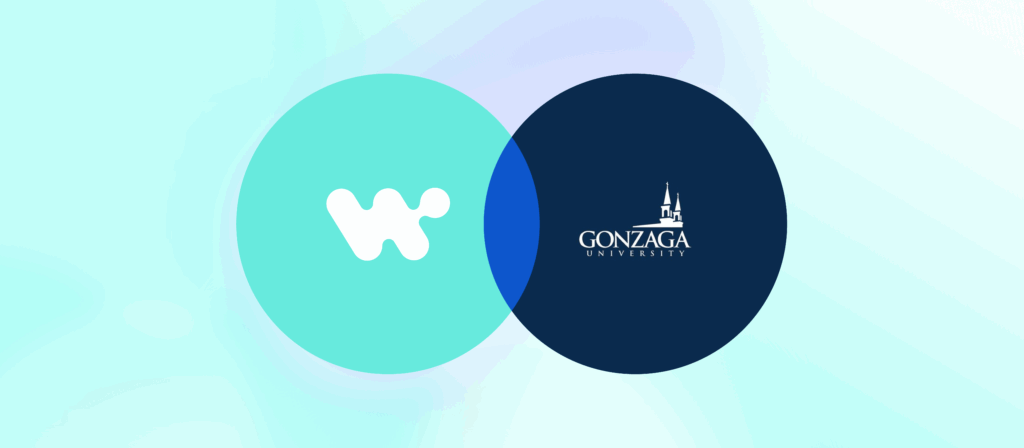At Gonzaga University, technology is inseparable from mission. For a Jesuit institution dedicated to educating the whole person, delivering seamless digital experiences isn’t just about efficiency; it’s about enabling students, faculty, and staff to thrive.
Yet with 150+ SaaS applications supporting 7,400 students and 3,000 staff, Gonzaga’s lean IT team of 60 found itself managing a growing maze of disconnected systems. Course registration, HR onboarding, and financial reporting all suffered from brittle integrations and manual data hand-offs. Each new request meant custom code, testing detours in Postman, and weeks of work.
By 2023, IT leaders reached a crossroads. To continue serving the community at scale, they needed a new integration strategy built on orchestration, automation, and empowerment.
The Breaking Point: Life Before Workato
From 2018 to 2023, Gonzaga relied on a patchwork of Boomi and a legacy CRM. Instead of accelerating progress, the stack slowed it down.
- Webhook delays: Building simple Webhooks in Boomi would take two to three weeks.
- Complex APIs: Schema testing required external tools and manual validation.
- Missed deadlines: Early Salesforce estimates showed projects would slip if they stayed on Boomi.
“We had no experience with Salesforce or Workato,” recalls Preeti Gosavi, Integration Architect. “But we calculated that the Salesforce build would take months on Boomi. With Workato, we were confident we could meet deadlines.”
Even vendor support couldn’t keep up. “It felt like a black box,” adds Roger Cummings, IT Director. “We couldn’t see inside, and we couldn’t move fast enough.”
The Pivot: Bold Goals, Clear Strategy
Rather than incremental fixes, Gonzaga set out to reinvent how data moved across campus. Their 2023 plan was ambitious:
- Replace Boomi and the CRM in one coordinated migration.
- Launch an Enterprise Data Hub (EDH) layer to create a single student truth.
- Double the automation builder base, empowering pro developers and citizen integrators alike.
- Lay the foundation for AI, unifying data so it could one day power predictive services and real-time insights.
Unlike Boomi’s black-box integrations, Workato’s open accelerator architecture gave Gonzaga visibility and flexibility, a transparent “magical kitchen for your data,” as one leader put it.
The Journey: From Sprint to Scale
The migration began with a dual-track approach. The old CRM stayed live while the team built Salesforce recipes in Workato.
- Backlog-driven sprints kept teams aligned and leadership engaged.
- The EDH accelerator enabled SQL-visible master-data syncs, breaking down silos.
- Hands-on support from Workato engineers on campus built momentum and confidence.
Over 120 integrations were on the migration list. Within weeks, 30 were live in just 10 days, a pace unthinkable before. Citizen integrators joined after Automation Pro training, doubling delivery capacity without adding headcount.
“Workato didn’t just sell and walk away,” Roger notes. “They rolled up their sleeves and helped us build confidence. It feels like a one-stop shop. Nothing seems impossible anymore.”
The Impact: Efficiency, Empowerment, and Innovation
The results spoke for themselves:
- Build time cut by 60%, from 10 days to 4.
- 30 integrations in 10 days during the first sprint.
- Two new cohorts of automation builders trained and certified.
- Zero professional services hours required, freeing budget for strategic initiatives.
- Significant cost savings by avoiding two new full-time hires.
Beyond the metrics, morale skyrocketed. Hours of log triage and manual API setup disappeared, replaced by space for innovation and creative problem-solving.
How Workato Beat Boomi
Gonzaga chose Workato for three reasons:
- A platform for everyone. Low-code UX empowers citizen developers and IT pros alike while supporting high-volume batch processing and deep Banner connectors.
- A true partnership. Workato fast-tracked connector releases and embedded its team on campus to ensure success.
- Confidence to self-migrate. By owning the process, Gonzaga reduced total cost of ownership and grew internal expertise.
The Road Ahead: From Orchestration to AI
With the CRM migration complete and the Enterprise Data Hub live, Gonzaga is building on its momentum:
- HR and Finance automations to streamline employee experiences.
- AI-powered student success nudges, using real-time data to help advisors and faculty intervene proactively.
- Expanded citizen-developer programs with light guardrails to balance innovation and governance.
- Data pipelines to Snowflake and the data lake to unlock advanced analytics and AI capabilities.
By 2026, Gonzaga aims to be a fully data-intelligent university where unified data, empowered builders, and AI-driven insights support every student’s journey.
Lessons for Higher Ed (and Beyond)
- Start with a POC that leaders care about. Early Salesforce wins created executive buy-in.
- Run backlog-driven sprints. They keep momentum and visibility high.
- Unify data before AI. The EDH laid the foundation for machine-learning projects.
- Empower citizen developers with guardrails. They can double IT’s capacity without risk.
From Orchestration to Impact
Gonzaga’s IT team has moved from firefighting to future-building, orchestrating data flows, automating routine tasks, and preparing for AI-powered operations.
As Roger puts it, “Workato feels like a one-stop shop for our data. Nothing seems impossible anymore.”
For other higher-ed institutions facing similar challenges, Gonzaga’s story offers a clear lesson. Modernization isn’t just about replacing old systems; it’s about building a foundation for the next decade of innovation.
